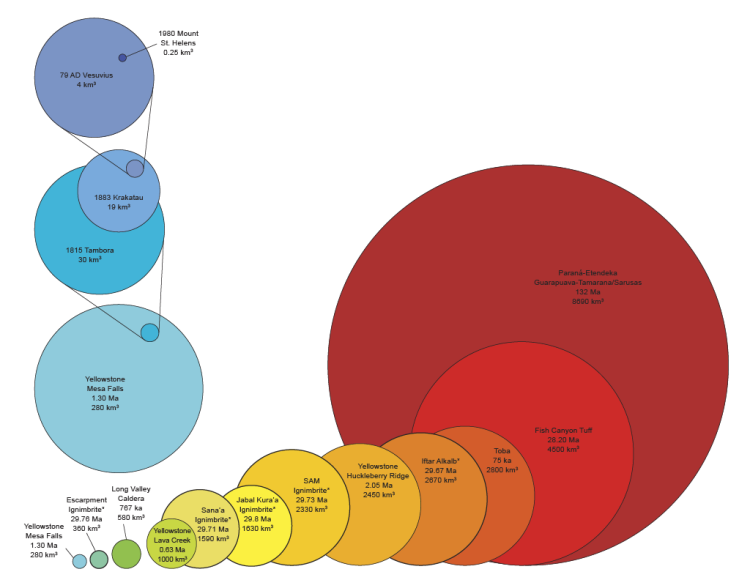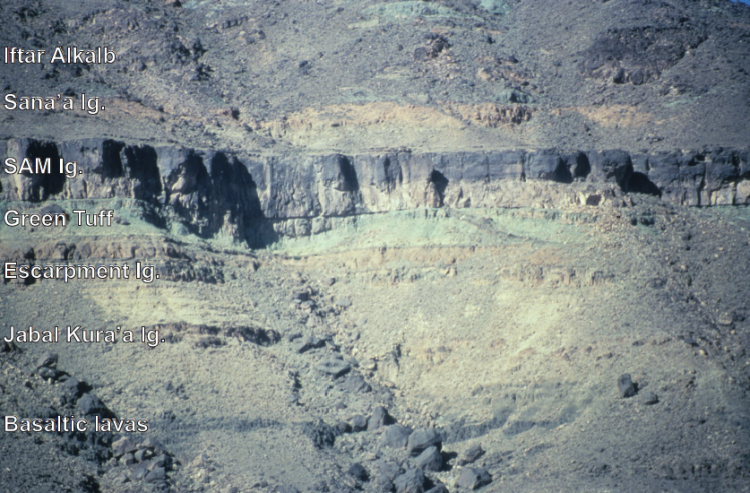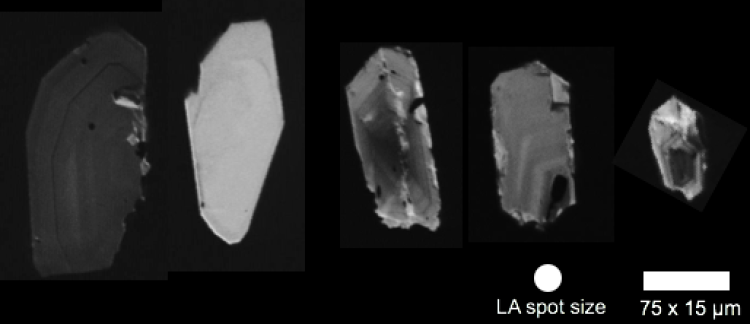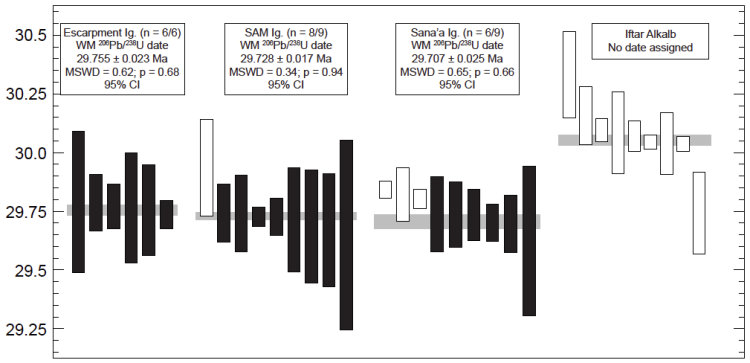Jennifer Thines - Project Profile
PhD candidate, University of Iowa, during AGeS project
Not with a whimper but a big ole bang – dating supereruptions from Northern Yemen

Volcanic eruptions are some of the most catastrophic events on Earth. On average, around 55 volcanoes erupt around the world each year. Most of these are small-volume and only have local or regional effects while others are large enough to have global consequences. Luckily for us, these larger eruptions don’t happen very often – 30 million years ago was a different story.
Large igneous provinces, such as the Yellowstone Plateau-Snake River Plain and Siberian Traps, are the site of short-lived, high-rate, large-volume eruptive episodes. The Afro-Arabian large igneous province, located in Northern Yemen and East Africa, saw a series of supereruptions 30 to 29.6 million years ago. It’s difficult to appreciate the scale of these gigantic eruptions since they were far larger than anything we have witnessed in historical times.

Dating individual eruptions in large igneous provinces can be challenging given the rapid emplacement (<5 Myr) of the erupted material. Even with suitable minerals for dating (i.e., zircon, sanidine), constraints on the temporal frequency and duration of these short-lived pulses are highly dependent on the precision of the dating method. The improved analytical precision (~0.1%) of chemical abrasion thermal ionization mass spectroscopy (CA-TIMS) can distinguish between the individual eruption ages of units that were erupted within a maximum timespan of a few million years.
The U-Pb system has three long-lived parent isotopes (238U, 235U, 232Th) that decay to stable Pb isotopes (206Pb, 207Pb, 208Pb, respectively). The fourth stable Pb isotope (204Pb) provides three independent geochronometers that are the backbone of U-Pb systematics and especially useful for dating materials older than hundreds of thousands of years, assuming that the crystals have not incorporated a lot of Pb during growth in the magma chamber. This is where zircon comes in. Zircon (ZrSiO4) is an ideal mineral for dating by the U-Pb method since it strongly incorporates U but not Pb, yielding high U/Pb ratios.
Zircon was separated from four large-volume rhyolitic units from the Northern Yemen section of the Afro-Arabian LIP – the Escarpment Ignimbrite (358 km3 DRE), SAM Ignimbrite (2,330 km3 DRE), Sana’a Ignimbrites (1,593 km3 DRE), and Iftar Alkalb caldera-collapse mega breccia (2,667 km3 DRE). All sample preparation and analyses were completed at the Boise State University Isotope Geology Laboratory in collaboration with Mark Schmitz and Corey Wall.

CA-TIMS is a destructive analytical method that requires complete digestion and purification of the analyzed material. Before that step, it is crucial to characterize the material that will be dissolved to have the best chance of obtaining a high-precision date. Zircons were first separated from the rocks and mounted on epoxy grain mounts. The grain mounts were then imaged using a scanning electron microscope (SEM) fitted with a cathodoluminescent light (CL) detector in order to image the internal morphologies of the zircon crystals. The next step was to analyze the zircon crystals for trace element concentrations and obtain preliminary U-Pb ages by laser ablation inductively coupled mass spectrometry (LA-ICP-MS).
The young (~30 Ma) age of the target units was the first major challenge, since there hasn’t been a lot of time for the radiogenic ingrowth of Pb so they are extremely sensitive to Pb incorporation during crystallization. The next challenge was that two of the four samples only yielded 30-50 zircon crystals from 2 kg hand samples (this is a situation of the more the merrier). The third challenge was that the majority of the zircon crystals were very tiny. There were more than a couple zircon crystals that were lost during picking and digestion due to static flinging in them in some random direction, and from burn-throughs during the LA-ICP-MS analysis (RIP little crystals).

CA-TIMS dating yielded ages of 29.755 ± 0.023 Ma for the Escarpment Ignimbrite, 29.728 ± 0.017 Ma for the SAM Ignimbrite, and 29.707 ± 0.025 Ma for the Sana’a Ignimbrite. No age was obtained for Iftar Alaklb since all of the dated zircon crystals were consistently older than the ages obtained for the underlying units but this provides evidence for a protracted crystallization history of the magma and the unique chemistries of these crystals could provide clues for earlier magma conditions. The ages obtained from this project were remarkably high-precision and the ages of three of these units are now distinguished outside uncertainty even though they were erupted in <1 Myr. These results also demonstrate that 4,339 km3 DRE of Afro-Arabian silicic volcanics were emplaced in 48 ± 34 kyr, yielding a magma flux of 9.04 x 10-2 km3/yr and making this the largest known flux of silicic volcanism on Earth.


